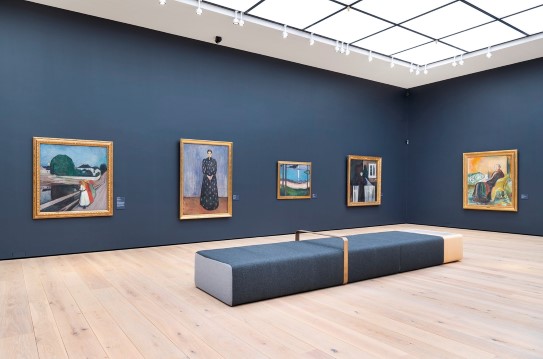The Frieze of Life
Edvard Munch
Transcription
Narrator
On 12 November 1892, Edvard Munch opened an exhibition of his works in Berlin. As soon as the doors of the venue opened, he heard laughter and whispering among the visitors. People thought that the paintings were ridiculous and grotesque, and that they looked unfinished and like sketches. The exhibition became a scandal, and after just a few days, it was boycotted and closed.
But the exhibition also made Munch famous. He settled in Berlin, and the following year he held a new exhibition in the city. This was where he first presented a series of paintings on the theme of love. This series would be the start of what would later develop into The Frieze of Life –series of paintings in which Munch – taking his own experiences as his starting point – aimed to paint the inner life and psyche of modern man.
In his own artistic manifesto, dated 1889, Munch had published the following statement:
Actor
“I will no longer paint interiors with people reading and women knitting. / I will paint living people who breathe, and feel, and suffer and love – / I will paint a series of such paintings / People will understand the sacredness of them, and take their hats off, as if they were in church.”
Narrator
Munch’s way of painting was a reaction to Realism, which attempted to imitate the external world, and which was the leading art movement at the end of the 19th century. Munch said that he wished to portray human life, with all its suffering and emotion, rather than painting his external surroundings.
In the series of paintings, which over 30 years after the scandalous exhibition in Berlin would gain the title The Frieze of Life, Munch aimed to express existential themes such as love and loss, sexuality, pain and loneliness, life and death.
The series includes several of Munch’s most famous works, such as Madonna, The Dance of Life, Death in the Sickroom, and the iconic The Scream.
Munch believed that images that might be baffling when viewed in isolation, would be more understandable when placed within a context.
As you can see, the paintings read almost like a written text or comic strip – when all the images are taken together, they create a single larger story, about the joys and sorrows of life.
Munch said himself that he considered this series to be one of the most important – if not the most important – of his works.